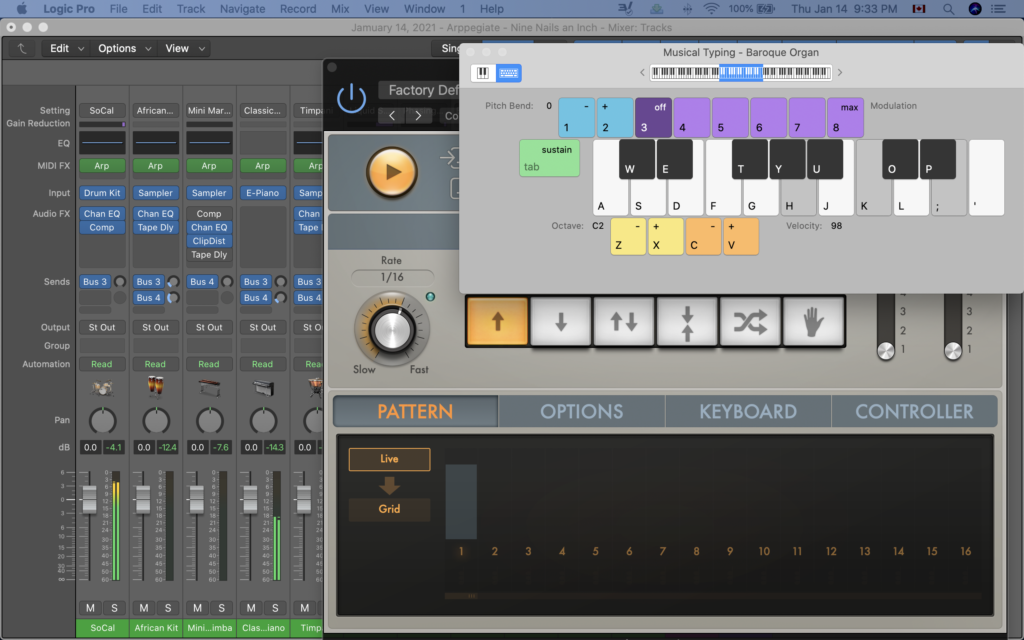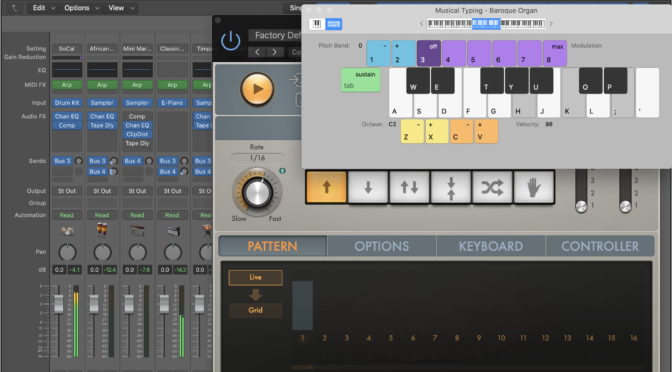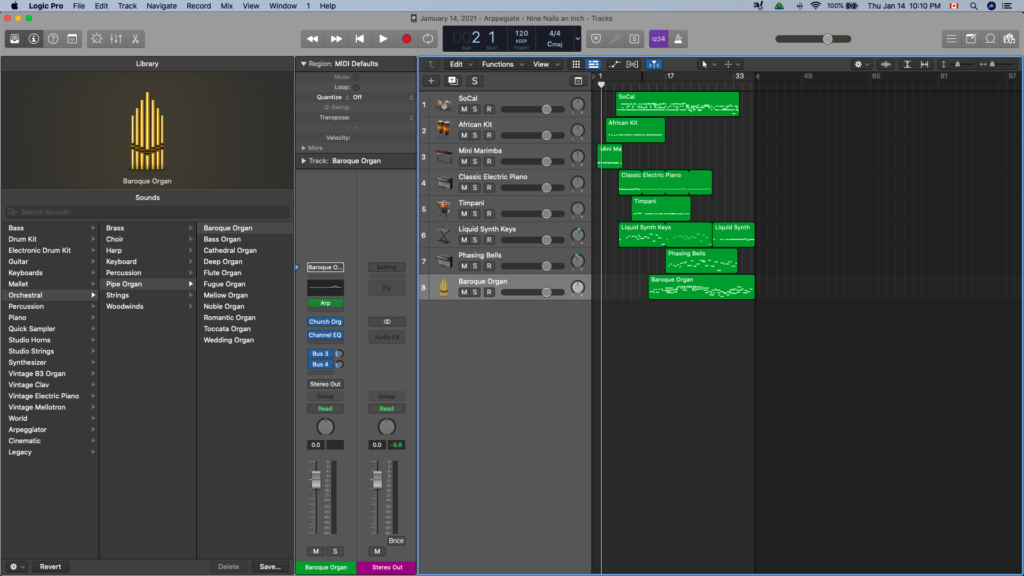Arpeggiate. Never really knew what that meant until today.
Basically, to arpeggiate a note is to run up the scale from its starting note. That is to say, if you start at C, then you run up a scale starting from C, be it Major or Minor. Since each scale has eight notes in it, from C you’d run up eight steps or so. The sound difference from scale to scale is what gives us our Major and Minor scales as well as the different types of tuning that an instrument can achieve.
Me being from a percussive background, heard this type of musical demonstration as “reverb on drugs”, which it kind of it, but it has a technical name so it can’t be labelled my way. The reason I say “reverb” is because, given enough of an increase in tempo, the notes sound as if they’re bouncing around and fading in and out over time, much like an echo or reverberation (which is what reverb is supposed to do).
Not really knowing where to go with this track, I flipped through Logic’s MIDI instruments and, of course, found the drums. Right from the very first drum beat, once I hit the bass drum and the snare drum, I knew I had found a found I’ve heard many a times: an arpeggiated bass drum, interspersed snare hit and then hi-hats. It was “Head Like a Hole” by NIN.
(The song isn’t actually made by playing arpeggiate notes or chords but uses the ease of repetition with early digital drum technology.)
I didn’t have any real plan for how to use the arpeggiate feature but once I heard it I knew what I could do.
The very first thought was to lay down drums. But after the drums were down it still didn’t seem to be enough. Some melody would be necessary. Keyboards came to mind. Then more percussion. Some synth. Bells, an organ. Here are the instruments for this track:
I didn’t touch any of the effects for this track other than to put the “Arpeggiate” effect on each channel strip:

From there it was layering upon layering. The total run time is only about 1.14 but I can see where this could go. What I was able to make today would be a great intro into a longer piece.
Why didn’t I make it longer? The simple reason is that I had to work today and I haven’t been able to sit down before 6:30 pm to do these tracks. Since I had to read up a little bit about what and how to use an arpeggiate (but knowing that Logic had one built in), it took a little bit of time to get started. But once I had started, it got easier.
And that’s what I’m finding with these tracks for this month:
It’s getting easier to select, assemble, and publish a track. I don’t hum and haw as much opting, instead, to have an idea in my mind and then finding something close to that. Unless I wanted to spend all night developing a sound, then it wouldn’t make sense to pick through each and every MIDI instrument available.
Some people might not like that approach, but I’ve found that those same people don’t publish as much. I’d rather get the idea out of my mind rather than for it to be the exact pitch in my mind.
But I digress.
I’m happy with the track and I can see myself re-visiting this track or this method of composition later on. For now I wanted to get used to the use of the feature and to see how it could be applied. Already I can hear on later listenings of the track that, although some parts can sound cool or appropriate for the time being, they don’t always age well. This is a a challenge in finding a sound that won’t date itself nor annoy the listener too much over time.
Given the instrument, the effect can occupy a large soundscape on its own with minimal input from other instruments.

